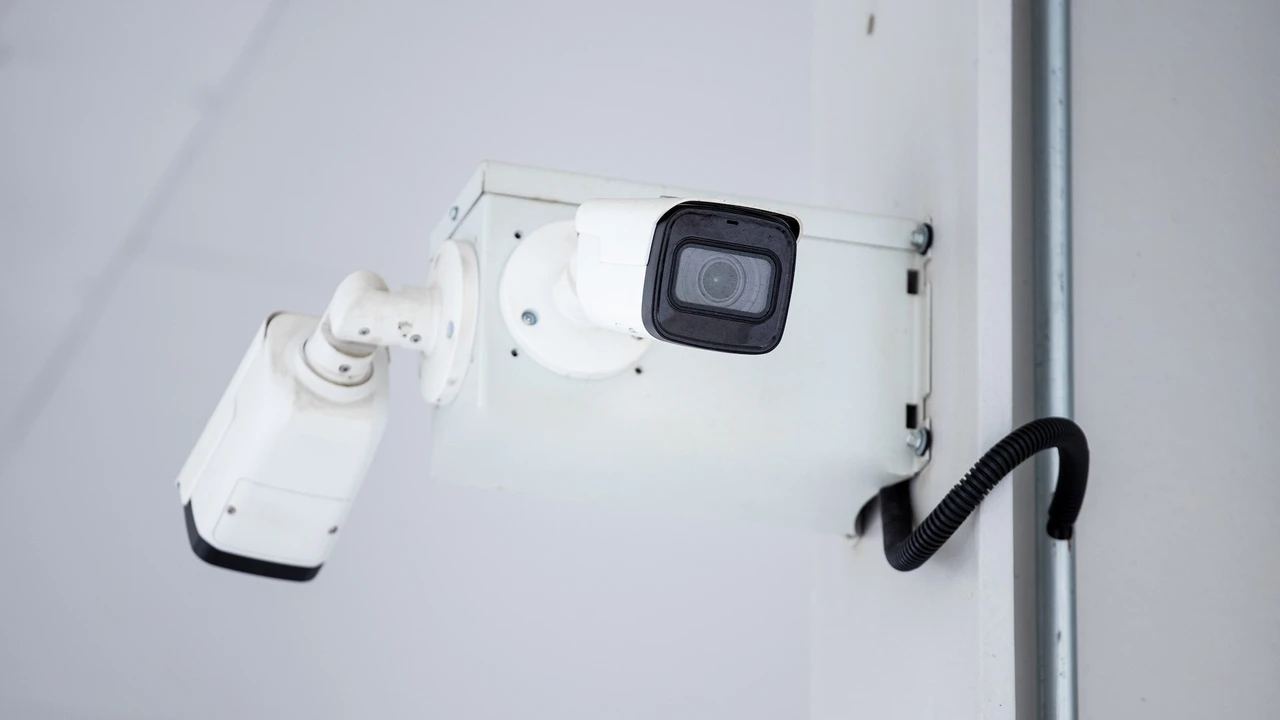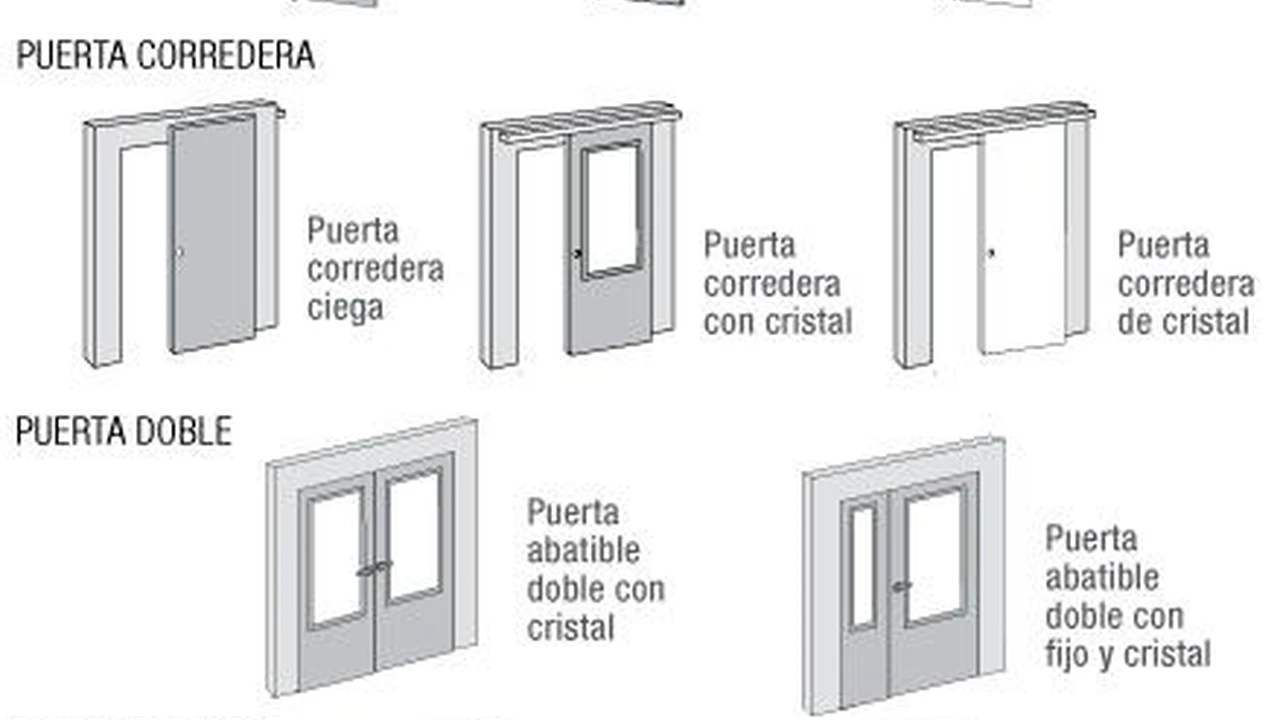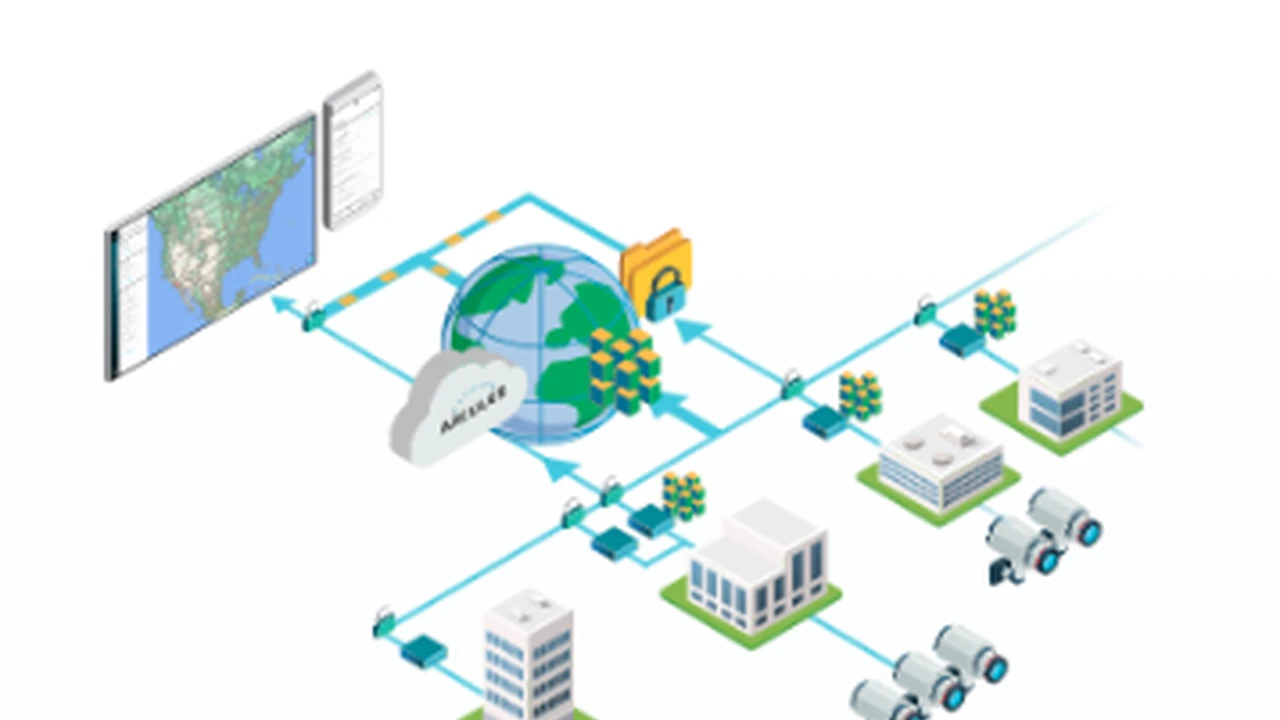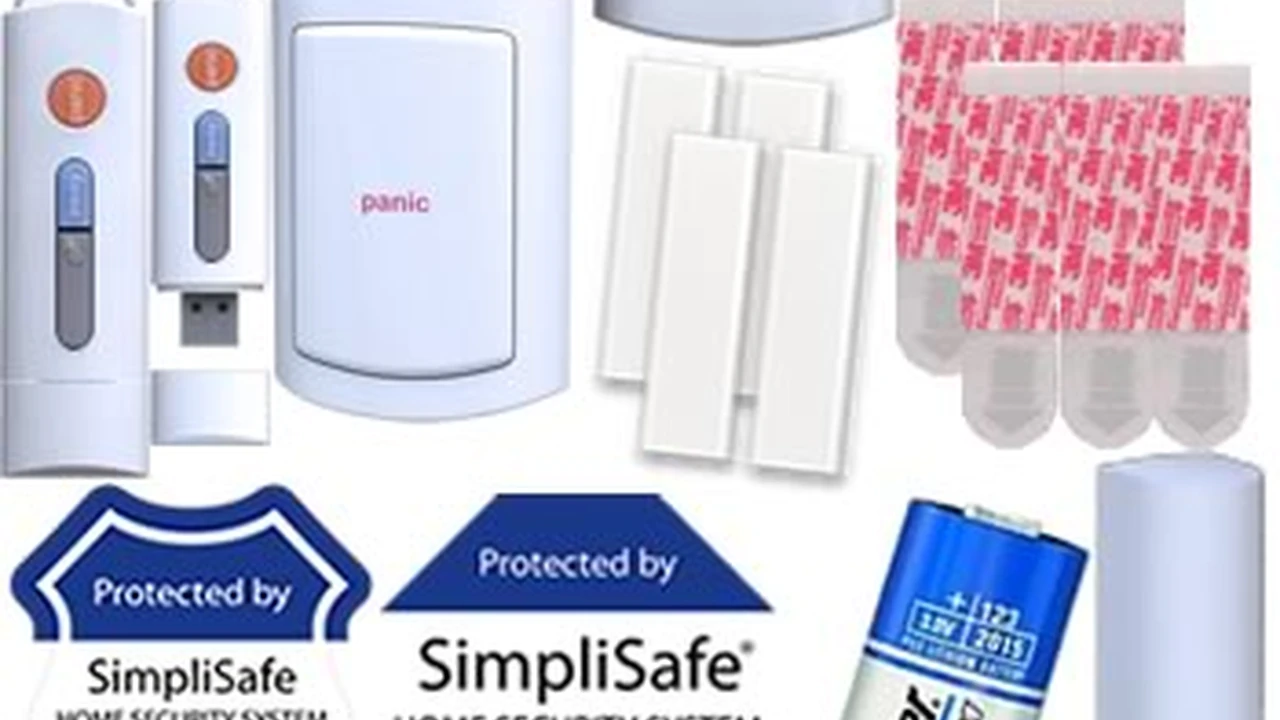Access Control Systems for Healthcare Facilities
Discover specialized access control systems designed for healthcare environments ensuring patient and staff safety.

Access Control Systems for Healthcare Facilities
The Critical Need for Robust Healthcare Access Control
Hey there! Let's talk about something super important: keeping healthcare facilities safe and secure. When you think about hospitals, clinics, and nursing homes, they're bustling places, right? Lots of people coming and going – patients, visitors, staff, vendors. This constant flow, while essential for care, also creates unique security challenges. That's where access control systems for healthcare facilities come into play. They're not just about locking doors; they're about creating a secure, efficient, and compliant environment that protects everyone and everything inside.
Imagine a hospital. You've got sensitive patient data, expensive medical equipment, pharmacies full of controlled substances, and vulnerable patients. Without proper access control, these areas could be at risk. We're talking about preventing unauthorized entry, protecting patient privacy (hello, HIPAA!), ensuring the safety of staff, and even managing emergency situations more effectively. It's a big job, and generic security solutions just won't cut it. Healthcare demands specialized systems that understand its unique operational rhythm and regulatory landscape.
Understanding Healthcare Access Control Challenges and Solutions
So, what makes healthcare access control so different? Well, for starters, it's a 24/7 operation. There's no 'closing time.' This means your security system needs to be constantly vigilant and adaptable. You also have a diverse user base with varying levels of access needs. A surgeon needs different access than a cafeteria worker, and a visitor needs even less. Plus, there's the constant pressure of compliance with regulations like HIPAA, which mandates strict controls over who can access patient information and areas where it's stored.
Another big challenge is balancing security with accessibility. You can't have doors constantly locked down, especially in an emergency. Staff need quick, unhindered access to critical areas, and patients need to move around for appointments. The best healthcare access control systems strike this delicate balance, providing robust security without impeding the flow of essential operations.
Let's break down some key solutions:
- Granular Access Permissions: This is crucial. Instead of a one-size-fits-all approach, healthcare facilities need systems that allow for highly specific access rights. For example, a nurse might have access to their ward and medication room, but not the surgical suite.
- Integration with Other Systems: A truly effective system doesn't stand alone. It integrates with HR systems for staff onboarding/offboarding, video surveillance for visual verification, and even emergency response systems for quick lockdown capabilities.
- Audit Trails and Reporting: For compliance and incident investigation, detailed logs of who accessed what, when, and where are indispensable.
- Scalability: Healthcare facilities often grow and change. The access control system needs to be able to expand and adapt without a complete overhaul.
Key Features of Advanced Healthcare Access Control Systems
When you're looking at access control for a healthcare setting, certain features really stand out. These aren't just nice-to-haves; they're often essential for meeting the unique demands of the environment.
Multi-Factor Authentication for Enhanced Security
Think beyond just a swipe card. Multi-factor authentication (MFA) adds layers of security. This could mean a card plus a PIN, or a biometric scan (fingerprint, facial recognition) in addition to a credential. For highly sensitive areas like pharmacies, data centers, or operating rooms, MFA is a game-changer. It significantly reduces the risk of unauthorized access, even if a credential is lost or stolen.
Real-time Monitoring and Alerting for Immediate Response
Security isn't just about preventing; it's about responding. A good system provides real-time monitoring, allowing security personnel to see who is entering or exiting specific areas at any given moment. More importantly, it triggers immediate alerts for unauthorized access attempts, forced entries, or doors left ajar. This allows for rapid response, which can be critical in a healthcare emergency.
Integration with Emergency Management Systems for Rapid Response
In a crisis – a fire, an active threat, a natural disaster – an integrated system is invaluable. It can automatically lock down certain areas, unlock others for evacuation, or even guide first responders. This seamless integration with fire alarms, mass notification systems, and building management systems ensures a coordinated and swift response, minimizing risk to patients and staff.
Visitor Management Systems for Controlled Access
Visitors are a vital part of the healthcare environment, but their access needs to be managed. A dedicated visitor management system, integrated with the main access control, can streamline check-ins, issue temporary credentials, track visitor movements, and even screen against watchlists. This ensures that only authorized visitors are on premises and provides a clear record for accountability.
Compliance and Audit Trail Capabilities for Regulatory Adherence
HIPAA, GDPR, and other regulations demand meticulous record-keeping. An advanced access control system automatically generates detailed audit trails, logging every access attempt, successful or not. This data is crucial for demonstrating compliance during audits and for investigating any security incidents. It provides an irrefutable record of who was where, and when.
Top Access Control System Recommendations for Healthcare
Alright, let's get down to some specific product recommendations. Keep in mind that the 'best' system often depends on the size of your facility, your specific needs, and your budget. But these are some solid contenders known for their reliability and features suitable for healthcare.
1. Genetec Security Center Synergis
Overview: Genetec is a powerhouse in unified security, and their Synergis access control system is a prime example. What makes it great for healthcare is its ability to integrate seamlessly with video surveillance (Genetec Omnicast), automatic license plate recognition, and intrusion detection. This creates a truly unified security platform, which is incredibly valuable in complex healthcare environments.
Key Features for Healthcare:
- Unified Platform: Manage access control, video surveillance, and other security systems from a single interface. This simplifies operations and improves situational awareness.
- Scalability: From a small clinic to a multi-campus hospital system, Synergis can scale to meet your needs.
- Open Architecture: It supports a wide range of hardware from various manufacturers, giving you flexibility and avoiding vendor lock-in.
- Advanced Reporting: Robust reporting tools for compliance and auditing, essential for HIPAA.
- Mobile Access: Supports mobile credentials for staff, offering convenience and modern security.
Use Cases: Large hospitals, multi-site healthcare networks, facilities requiring high levels of integration between security systems.
Estimated Pricing: Genetec is typically an enterprise-level solution. Expect significant investment, often starting from tens of thousands of dollars for software licenses and hardware, scaling up based on the number of doors and integrations. Installation and ongoing maintenance costs are also factors.
2. LenelS2 OnGuard
Overview: LenelS2 OnGuard is another industry leader, particularly known for its robust and comprehensive access control solutions. It's a highly customizable system that can be tailored to the specific needs of a healthcare facility, offering deep integration capabilities.
Key Features for Healthcare:
- Comprehensive Security Management: OnGuard provides a full suite of security management tools, including access control, alarm monitoring, video management, and visitor management.
- High Reliability: Known for its stability and performance, crucial for 24/7 healthcare operations.
- Extensive Integration Options: Integrates with a vast array of third-party systems, including HR, time and attendance, and building automation.
- Advanced Credentialing: Supports various credential types, including smart cards, mobile credentials, and biometrics.
- Compliance Tools: Strong audit trail and reporting features to help meet regulatory requirements.
Use Cases: Medium to large hospitals, research facilities, healthcare campuses with complex security needs and existing infrastructure.
Estimated Pricing: Similar to Genetec, LenelS2 OnGuard is an enterprise solution. Pricing will vary widely based on the number of doors, features, and integrations, but typically starts in the tens of thousands of dollars for initial setup and software licenses.
3. HID Global pivCLASS
Overview: While HID Global is famous for its access control readers and credentials, their pivCLASS solution is specifically designed for high-assurance identity and access management, often used in government and critical infrastructure, which includes many healthcare facilities. It focuses on strong authentication and compliance.
Key Features for Healthcare:
- High-Assurance Identity: Focuses on strong, verifiable identity for personnel, often using PIV (Personal Identity Verification) or PIV-I (PIV-Interoperable) credentials.
- Multi-Factor Authentication: Built-in support for various MFA methods, including smart cards and biometrics.
- Compliance Focused: Excellent for facilities needing to meet stringent regulatory requirements for identity and access.
- Interoperability: Designed to work with existing physical access control systems (PACS) from various vendors.
Use Cases: Healthcare facilities with very high-security requirements, research labs handling sensitive materials, government-affiliated healthcare institutions, or those needing to comply with specific federal identity standards.
Estimated Pricing: pivCLASS is a specialized solution. Pricing will depend heavily on the scale of deployment and integration with existing PACS, but it's generally considered a premium solution with costs reflecting its high-security focus.
4. OpenPath Access Control
Overview: OpenPath offers a modern, cloud-based access control solution that's gaining popularity for its ease of use, mobile-first approach, and robust security. It's particularly appealing to facilities looking for a flexible, future-proof system.
Key Features for Healthcare:
- Cloud-Based: Easy to manage remotely, reduces on-site server infrastructure, and offers automatic updates.
- Mobile Access: Patented 'Wave to Unlock' technology allows hands-free entry via smartphone, which is great for staff carrying equipment or pushing carts.
- Multi-Factor Authentication: Built-in support for mobile credentials with biometric verification on the phone.
- Scalability and Flexibility: Easy to add or remove doors and users as needs change.
- Integration: Integrates with video surveillance, visitor management, and other smart building systems.
Use Cases: Clinics, smaller hospitals, administrative offices within healthcare networks, facilities looking for a modern, mobile-centric solution with easy management.
Estimated Pricing: OpenPath offers more transparent pricing, often on a per-door or per-user subscription model, plus hardware costs. Hardware for a single door might be a few hundred dollars, with monthly software fees per door or user. This can be more budget-friendly for smaller deployments or those preferring operational expenditure over capital expenditure.
5. Paxton Net2 Access Control
Overview: Paxton Net2 is a popular choice for its user-friendliness and comprehensive feature set, making it suitable for a wide range of organizations, including healthcare. It's known for being intuitive to install and manage.
Key Features for Healthcare:
- User-Friendly Software: Net2 software is intuitive, making it easy for security staff to manage users, access levels, and events.
- Scalable: Suitable for small clinics up to larger hospital departments.
- Variety of Entry Methods: Supports proximity cards, fobs, keypads, and biometric readers.
- Event Reporting: Provides detailed event logs for auditing and compliance.
- Integration Options: Can integrate with fire alarms, intruder alarms, and CCTV systems.
Use Cases: Small to medium-sized clinics, specialized departments within larger hospitals, administrative buildings, and nursing homes looking for a reliable and easy-to-manage system.
Estimated Pricing: Paxton Net2 is generally more accessible in terms of initial investment compared to enterprise-level systems. Hardware costs per door can range from a few hundred to over a thousand dollars, with software licenses often being a one-time purchase or tiered based on system size. Installation costs would be additional.
Comparing Healthcare Access Control Systems Key Considerations
Choosing the right access control system for a healthcare facility isn't a decision to take lightly. There are several factors you need to weigh carefully to ensure you get a system that truly meets your needs and provides long-term value.
Scalability and Future-Proofing Your Investment
Healthcare facilities are dynamic. They grow, they merge, they add new wings, and they adopt new technologies. Your access control system needs to be able to keep up. Can it easily expand to accommodate more doors, more users, or new buildings? Is it built on an open architecture that allows for integration with future technologies, or will you be locked into a proprietary system that becomes obsolete quickly? Investing in a scalable and future-proof system means you won't have to rip and replace it every few years, saving significant time and money.
Integration Capabilities with Existing Healthcare Systems
A standalone access control system is like a single puzzle piece – it doesn't give you the full picture. The real power comes from integration. Can it talk to your HR system to automatically provision and de-provision staff access? Does it integrate with your video surveillance for visual verification of events? What about your building management system for HVAC and lighting control, or your emergency notification system? Seamless integration streamlines operations, enhances security, and provides a more holistic view of your facility's security posture. Look for systems with open APIs and a track record of successful integrations.
Compliance with Healthcare Regulations HIPAA and Beyond
This is non-negotiable in healthcare. HIPAA (Health Insurance Portability and Accountability Act) in the US, and similar regulations globally, mandate strict controls over access to patient information and areas where it's stored. Your access control system must provide robust audit trails, granular access permissions, and reporting capabilities to demonstrate compliance. It should also support strong authentication methods to protect sensitive areas. Always ensure the system vendor understands and can help you meet these critical regulatory requirements.
Ease of Use and Management for Healthcare Staff
Security systems can be incredibly powerful, but if they're too complex for your staff to use and manage effectively, they become a liability. In a busy healthcare environment, security personnel need intuitive interfaces to quickly add/remove users, change access levels, and respond to alerts. Training time should be minimal. A user-friendly system reduces errors, improves efficiency, and ensures that the system is actually utilized to its full potential.
Total Cost of Ownership Hardware Software and Maintenance
Don't just look at the upfront purchase price. Consider the total cost of ownership (TCO) over the lifespan of the system. This includes:
- Hardware Costs: Readers, controllers, door locks, servers.
- Software Licenses: Initial purchase and ongoing subscription fees.
- Installation Costs: Professional installation can be a significant expense.
- Training Costs: For security and administrative staff.
- Maintenance and Support: Annual service contracts, software updates, and technical support.
- Operational Costs: Energy consumption, credential replacement.
A cheaper upfront system might end up costing more in the long run due to high maintenance, lack of scalability, or poor integration capabilities. Get detailed quotes for all these aspects.
Installation and Maintenance Best Practices for Healthcare Access Control
Once you've chosen your system, the journey isn't over. Proper installation and ongoing maintenance are just as crucial for ensuring your access control system performs optimally and remains secure throughout its lifespan.
Professional Installation and Configuration for Optimal Performance
Unless you have highly specialized in-house expertise, professional installation is almost always the way to go. Certified installers understand the nuances of wiring, network configuration, and software setup. They'll ensure that all components are correctly installed, calibrated, and integrated, minimizing glitches and maximizing performance. They can also advise on optimal reader placement, door hardware, and network security best practices specific to your facility's layout and needs.
Regular System Updates and Patches for Security and Functionality
Just like your computer or smartphone, access control software needs regular updates. These updates often include critical security patches to protect against new vulnerabilities, as well as performance enhancements and new features. Neglecting updates can leave your system exposed to cyber threats, which is a huge risk, especially with sensitive patient data involved. Establish a schedule for regular updates and ensure your IT department or security vendor handles this diligently.
Ongoing Training for Security and Administrative Staff
Technology evolves, and so do your staff. Regular training sessions are essential to ensure that everyone who interacts with the access control system – from security guards monitoring events to HR personnel managing credentials – is proficient in its use. This includes training on new features, troubleshooting common issues, and understanding emergency protocols. Well-trained staff are your first line of defense and can maximize the system's effectiveness.
Routine System Audits and Performance Checks
Don't just set it and forget it! Schedule regular audits of your access control system. This involves:
- Reviewing Access Logs: Look for unusual activity or unauthorized access attempts.
- Testing Credentials: Ensure all cards, fobs, and mobile credentials are still working correctly.
- Checking Door Hardware: Verify that all locks, readers, and sensors are functioning properly.
- Reviewing Access Levels: Ensure that access permissions are still appropriate for current staff roles and responsibilities.
- Testing Integrations: Confirm that all integrated systems (CCTV, alarms) are communicating effectively.
These routine checks help identify and address potential issues before they become major security breaches.
Developing Clear Access Control Policies and Procedures
A great system is only as good as the policies that govern its use. Develop clear, comprehensive policies and procedures for:
- Issuing and revoking credentials.
- Managing visitor access.
- Handling lost or stolen credentials.
- Responding to security alerts.
- Emergency lockdown and evacuation procedures.
- Data privacy and compliance.
Communicate these policies clearly to all staff and ensure they are regularly reviewed and updated. This creates a framework for consistent and effective security operations.
:max_bytes(150000):strip_icc()/277019-baked-pork-chops-with-cream-of-mushroom-soup-DDMFS-beauty-4x3-BG-7505-5762b731cf30447d9cbbbbbf387beafa.jpg)






